
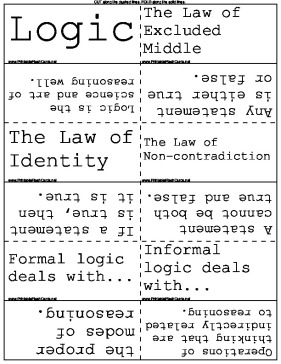
Learn the terms and rhetoric for discussing logical statements with these definition flash cards.
There are 41 flash cards in this set (7 pages to print.)
To use:
1. Print out the cards.
2. Cut along the dashed lines.
3. Fold along the solid lines.
Sample flash cards in this set:
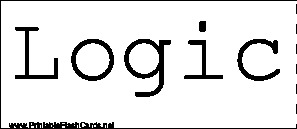
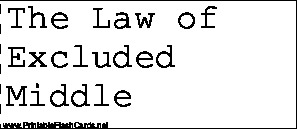
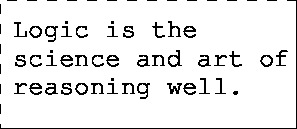
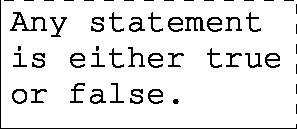
| Questions | Answers |
|---|---|
| Logic | Logic is the science and art of reasoning well. |
| The Law of Excluded Middle | Any statement is either true or false. |
| The Law of Identity | If a statement is true, then it is true. |
| The Law of Non-contradiction | A statement cannot be both true and false. |
| Formal logic deals with... | the proper modes of reasoning. |
| Informal logic deals with... | Operations of thinking that are indirectly related to reasoning. |
| Induction | Reasoning with probability from examples or experience to general rules. |
| Deduction | Reasoning with certainty from premises to conclusions. |
| Term | A concept that can be expressed precisely. |
| Definition | A statement that gives the meaning of the term. |
| Ambiguous words... | have more than one definition. |
| A vague word... | is a word whose extent is unclear. |
| What are the six purposes of definitions? | 1. Definitions show relationships. 2. Definitions remove ambiguity. 3. Definitions reduce vagueness. 4. Definitions increase vocabulary. 5. Definitions can explain concepts theoretically. 6. Definitions can influence attitudes. |
| What are the five types of definitions? | 1. Lexical definition 2. Precising definition 3. Stipulative definition 4. Theoretical definition 5. Persuasive definition |
| Genus of a term | A term that is more general, broad, or abstract than the original term and includes it. |
| Species of a term | A term that is more specific, narrow, or concrete than the original term and is included by it. |
| Extension of a term | The sum of all the individual objects described by it. |
| Intension of a term | The sum of all the common attributes denoted by the term. |
| What are the three methods of defining? | 1. Defining by synonym 2. Defining by example 3. Defining by genus and difference |
| What are the six rules for defining by genus and difference? | 1. A definition should state the essential attributes of the term. 2. A definition should not be circular. 3. A definition should not be too broad or too narrow. 4. A definition should not be unclear or figurative. 5. A definition should be stated positively, if possible. 6. A definition should be of the same part of speech as the term. |
| Statement | A sentence which is either true or false. |
| Sentences that have no truth value; non-statements | Questions, commands, or nonsense sentences. |
| What are three types of self-supporting statements? | 1. Self-reports 2. Statements which are true or false by logical structure 3. Statements which are true or false by definition |
| Self-supporting statement | A statement whose truth value can be determined from the statement itself. |
| Tautology | A statement which is always true because of its logical structure. |
| Self-contradiction | A statement that is false due to its logical structure. |
| Supported statement | A statement whose truth value depends on evidence or information from the outside itself. |
| What are three ways to determine whether a supported statement is true or false? | 1. Authority 2. Experience 3. Deduction |
| Consistency | When two statements can be true at the same time. |
| Inconsistency | When there is a conflict between two statements. |
| Implication | When the truth of one statement requires the truth of the other. |
| Logical equivalence | When two statements imply one another. |
| Independence | When the truth or falsity of one statement has nothing at all to do with the truth or falsity of another statement. |
| Real disagreement | An actual inconsistency between two statements: they cannot both be true at the same time. |
| Apparent disagreement | A difference of opinion or perception. |
| Verbal disagreement | A misunderstanding due to differing definitions for one or more words. |
| How to change statements into standard form: | 1. Identify and write down the entire subject. 2. Choose the proper "to be" verb (is, are, was, will be...) 3. Rewrite the entire predicate as predicate nominative. |
| Subject of a statement | The term being described. |
| Predicate of a statement | The term that describes or asserts something about the subject. |
| Quantity of a statement | The scope of its claim about the extension of the subject: universal (entire extension) and particular (partial). |
| Quality of a statement | The positive or negative nature of its claim about the subject: affirmative (asserts something) and negative (denies something). |